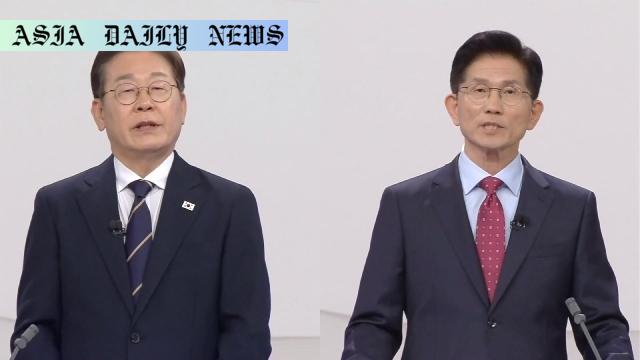Presidential election – South Korean candidates Lee Jae-myung and Kim Moon-soo rally support ahead of the impending vote.
- South Korea heads toward a tight presidential election.
- Lee Jae-myung and Kim Moon-soo rally final support across regions.
- Both candidates focus on vital issues like jobs and economy.

Intensified Campaigns Define South Korean Presidential Election 2023
South Korea is standing at an important juncture as its citizens gear up to elect their next president. Set for Tuesday, this election has gripped the nation, with widespread debates and growing anticipation. On the last Sunday leading up to the highly contested election day, presidential candidates from the ruling People Power Party (PPP) and the largest opposition Democratic Party participated in extensive campaigning. Keen on winning every last vote, the contenders reached voters in both urban centers and regional locations. This election season emphasizes not only party ideologies but also individual efforts to shape South Korea’s economic, employment, and infrastructural landscape in the years to come.
The Two Leading Contenders and Their Campaign Pledges
Representing the opposition Democratic Party is Lee Jae-myung, a politician widely recognized for his outspoken nature and pragmatic policy outlook. During his campaign visits to Busan and Daegu, cities that lean heavily towards conservative ideologies, Lee aimed to bridge existing divides. His primary campaign promise revolves around economic revitalization—he envisions an investment bank to pump resources into regional economies and reinstate balance between South Korea’s rural and urban landscapes.
Meanwhile, Kim Moon-soo of the ruling People Power Party conducted equally rigorous campaigns in areas such as the bustling capital Seoul and Gyeonggi province. With prior governance experience in Gyeonggi, Kim resonates with voters by emphasizing tangible outcomes. His primary focus lies on improving youth employment opportunities and reconstructing metropolitan transportation to cater to modernization and expansion trends.
The Role of Early Voting and Voter Participation
Early voting, conducted on Thursday and Friday, has set the tone for this eagerly awaited election. Recording a turnout of 34.74 percent, the rate is slightly below that of the 2022 presidential election. However, it stands as the second-highest in South Korea’s democratic history. This impressive statistic highlights the electorate’s keen interest in driving the nation’s future, particularly amidst economic and global uncertainties. Analysts anticipate higher turnouts in urban locations on actual voting day as Monday campaigns are directed at populous city centers.
What This Election Means for the Nation
The South Korean presidential election isn’t just an opportunity to elect a new leader—it is a powerful moment of recalibration for the nation. Struggling with economic disparity, youth unemployment, and infrastructural inefficiencies, South Korea’s election decisions will significantly influence its trajectory on both regional and global fronts. Both Lee and Kim’s campaign priorities reflect this urgency and their acknowledgment of the electorate’s concerns. By addressing these pressing matters, the South Korean populous hopes to ensure resilience, development, and harmony across the peninsula.
As the election day unfolds, the world’s eyes are on this East Asian nation. Whether South Korea maintains its existing trajectory under the People Power Party or shifts gears with the Democratic Party, the outcome is set to redefine leadership expectations, economic approaches, and international relations within the country and beyond. One thing is certain—this election is as much about the candidates as it is about South Korea’s collective aspiration for a balanced and innovative future.



Commentary
A Tight Race With High Stakes
The South Korean presidential election has always been a highly anticipated event, but there is something particularly charged about this year’s contest. With two strong candidates representing parties with differing ideologies, voters are faced with significant decisions about who is best suited to lead the nation in a time of economic uncertainty and societal division. Lee Jae-myung of the Democratic Party and Kim Moon-soo of the ruling People Power Party are not only fighting for votes but also for the nation’s identity moving forward.
Economic Recovery as a Dominant Theme
It is evident from their campaigns that both candidates recognize the urgency of economic recovery. The pandemic has left nations across the globe grappling with challenges, and South Korea is no exception. Kim’s focus on employment and metropolitan infrastructure improvement stands out as pragmatic solutions to pressing issues. Similarly, Lee’s call to boost regional economies is thought-provoking. However, the success of these measures rests not just in their conceptualization but in their execution—a point that both candidates must address.
A Question of Leadership Style
Beyond policies, this election sheds light on leadership styles. Kim’s governance experience may appeal to those seeking stability, while Lee’s assertive and reform-focused approach might resonate with voters looking for a change. The voter turnout will be crucial in determining which philosophy holds more weight among South Koreans—continuity or change.
The Global Implications
South Korea’s presidential election is not just a national event but a global one. As a leading technological and economic powerhouse, the direction the country takes will undeniably influence its place on the global stage. The policies that emerge from this election will affect not only South Korea’s future but also its relationships with key partners such as the United States, China, and neighboring Japan. The stakes could not be higher, and the world watches with bated breath.